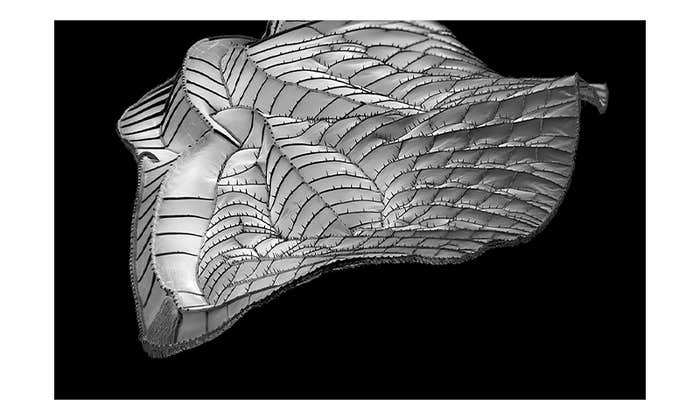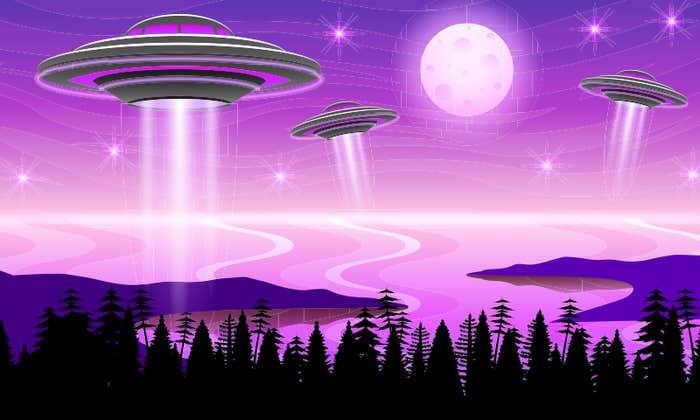I was in my apartment in Sierra Madre, which is a little town lined by tall palm trees, wedged between Pasadena and Azusa, set right at the foot of the San Gabriel Mountains, which tower over that part of LA like a brown corrugated wall, pretty ugly if you ask me. It was kind of a blessing when the smog got so thick you couldn’t see it, which could happen even from only three miles away. None of the ring of mountains backing LA are good-looking. But they do form quite the wall, as we found out that day.
Luckily I was an active kayaker before I broke my arm, and I still had my kayak. My apartment was a granny flat over a garage, its separate entrance something I valued a lot, as I didn’t have to bother my landlord going in and out, and he usually never saw me and thus never got a chance to scam on me. It was kind of a mercy rental on his part, or so I thought before his intentions became clear, as I couldn’t afford Hollywood anymore, no doubt obvious when I gave him my clichéd young-aspiring-actress-currently-waitressing shtick. And he let me store my big stuff in his garage below my studio, which was really just a storage shed with a bathroom in it, tacked onto the flat roof of his garage. So when the atmospheric river hit, I was one of the few people in the city with watercraft on hand.
Water is a force of nature, you can’t resist it if it gets you.
It rained hard all that first night, the timing was part of the problem—by the time everyone woke up things were already bad, and it just went downhill from there. Literally so for the water, and therefore everything else. But it wasn’t your ordinary flood, or maybe it was, I don’t really know, but in our case, the water came roaring down off the side of the San Gabriels onto us. It was terrifying to see what the dawn revealed that day. The mountains are ten thousand feet high over Sierra Madre, and they were catching all that rain, which was falling as hard as in a hurricane or something, and then it was all rushing down those vertical ravines onto the streets that poked up into the ravines, now all of them whitewater rapids brown with mud, and filled with boulders and shrubs and pieces of all the houses that were coming apart farther up the street.
I looked out my front door and saw cars floating down the street on a brown wave about three feet high that covered everything. I could see the water was already coming into my landlord’s house, and rushing hard toward the 210. Everywhere I looked was a big sheet of brown water! I shouted to my landlord but he had already left without informing me, very typical. In fact I couldn’t see anyone anywhere except for a family on top of their SUV, getting taken for a sideways ride and looking desperate.
I got down my outside stairs and sloshed through brown water to the garage side door. Inside I found the power had gone out, of course, so it was a struggle to get the big garage door open. I managed to pull it up from the inside, and a sloosh of water flowed into the garage, a little wave about a foot high. But there was my kayak and I grabbed it and the paddle off the wall, wriggled into the skirt and got into the kayak and took off into the street.
A whole river network was being revealed or half-revealed by currents in the streets.
That was a crazy moment, realizing the streets were all flooded and my kayak was the only way for me to get around. So much water! And brown as hot chocolate. And it was still raining cats and dogs too, so it was hard to see very far, and hard to believe what you could see. Later I heard the whole LA basin was flooded, all the way from the Hollywood Hills down to San Clemente, past Irvine where I grew up. Orange County was just as bad as LA, which makes sense given they are the same coastal plain with the same backing mountains. Of course there are some high points here and there on the plain, as everyone found out that day. Palos Verdes sticking up near Long Beach of course, and a few inland neighborhoods on lines of low hills like Puente Hills and Rose Hill, and back where the freeways meet around San Dimas. But for the most part LA is just one big coastal plain, and on that day, a big brown lake. In lots of places the elevated freeways were the only flat surfaces that stuck up out of this new lake, so, with no other place to go, the freeways were where people went. There were still some cars up there, but none of them were moving, and as the need for space to accommodate people got greater, a lot of cars were shoved over the side into the drink.
I kayaked under the 210 through a very scary underpass, and paddled around getting people off roofs and over to the freeway, where onramps served as boat docks. A lot of people were zipping around on motorboats they had kept in their driveways, also some kayaks like mine. We were doing all we could to help, some people were really desperate, especially if they had kids, and it was hard to keep them from tipping my kayak over in their panic. My arm started to hurt where it had broken, and I kept feeling a sense of unreality that this could all be happening at all, it was too much like a cheesy disaster film, but whatever, I must have gotten cast at last, and besides the fear on people’s faces and in their voices kept reminding me that no, this was real no matter how weird it was. And my arm hurt, kayaking is just very bilateral, you can’t do it one-armed, but I just kept saying Fuck it and kept paddling.
One thing about the LA basin being so huge was that even though the whole thing was flooded, it was never flooded very deep. Lots of taller rooftops stayed above the flood level, although many other buildings had collapsed into the water. Most palm trees were knocked down, it was a shock to see and a danger to navigation. One of many! Sometimes I had people hanging on to the back of my kayak and the current would take us toward a floating tree or a car and I would have to paddle insanely to get away from them, my arm hurting and the people hanging on and not always kicking in the most helpful ways. And all the old washes crossing the plain were now revealed again as fast places in the flow, it was spooky to see those currents, dangerous too, and it was never obvious which way water would be moving on any given street, because it depended on where the nearest wash was, since the water got sucked toward those, and the streets were almost flat. A whole river network was being revealed or half-revealed by currents in the streets, north south east west, they could be running in any direction. Orange Grove Avenue was on enough of a tilt to be like a water slide running south, then the old sunken part of the Pasadena Freeway just west of it ran in the other direction, it was crazy. Sepulveda was scary fast, I was told, the other kayakers all said Stay off Sepulveda, it’s like class 8! And the rain kept pounding down on us. Hard rain, in LA, for hour after hour? It was like Noah’s flood! And it looked like it could go on for forty days and forty nights too, why not?
So, ten million people stranded on all the high points left sticking out, and no food to speak of. Rain pounding down for hour after hour. Lots of little boats but nothing big, and nothing organized. All the freeways packed with very wet people. It was never colder than about seventy degrees, although that feels cold when you’re wet and it’s windy, but cold wasn’t the issue. Nor was the flood like some do-it-right-now-or-die emergency, where you get an hour of total danger followed by relief. That became clear as it went on. So, not like a movie, not at all. Which was impressing me more and more. Here I was helping people, all of us wet and scared, and my right bicep just screaming, and I kept thinking This is real, this feels good, why again are you trying to be a fucking actress? Oh sure, some people had gotten caught somehow and drowned, it was inevitable given the number of people and the power of water, water is a force of nature, you can’t resist it if it gets you, but for the most part people were on rooftops or on the freeways, and it was more a matter of evacuating everyone before they starved than anything else. If you didn’t get drowned right away then it was just a matter of holding on and waiting for relief.
The entire city of Los Angeles is going to have to be replaced.
So as the day wore on I joined a crowd on the roof of a restaurant and they fed us spaghetti. They had broken through the roof and were using the restaurant’s food supplies and big pots from its kitchen, and cooking over an open fire a group of men were tending, set on a big sheet of corrugated metal they had pried off of something, with another sheet as a roof over them to keep the rain off. Chances seemed good they would burn that restaurant down, but on the other hand they could always take their roof sheet away and the rain would drench any fire that wasn’t nuclear, it was still pouring down so.
After a while there my arm felt better and I went back on the water, fueled up and ready to help more people. There were fewer of them in the later afternoon, people were either dead or had gotten to a high point of some kind. So I joined the other boaters and we made some street sweeps. It was really fun to ride down Orange Grove Avenue, I have to say, running the brown flow almost as fast as a car, but you had to stay sharp, because sometimes an easy flow would head under a freeway bridge or the like and it could quickly become desperate getting out of that current before you got sucked down and killed. People shared knowledge of these danger zones, that’s how I heard about Sepulveda, no one’s phone was working but some people had GPS devices with maps saved on them, and they were happy to share their orienteering news, and a lot of people out had local knowledge as well, so we paddled around and the motorboats zipped around, often wasting gas without thinking that they weren’t going to be able to refill anytime soon, but after a while they remembered, if they didn’t run out, and so most of the action as the sun went down was kayakers and a few rowboats and the like, even some sailboats with their sails down and people in them paddling along awkwardly. Little flotillas like human water bugs on the great lake of LA.
And what was occurring to me over and over again as all this was happening was, Hey: I hate LA. I was born here and I know it well, and have even read or been told some of its history in school, and I really do hate it. The truth is, after World War II this place went from a sleepy little spread of villages to the ten million people here now, and during that time the developers were getting rich making ticky-tack suburban neighborhoods, that and putting in the freeways, which cut the plain into a hundred giant squares, and all of it crap. No plan, nothing good, no parks, no organization, no plan of any kind. Just buy some orange grove and subdivide it and tear out the trees and build a bunch of plywood houses, and then do it again, over and over. It happened in a snap of the fingers, and it was never anything but stupid. And that’s what we’ve been living in ever since! And more than a few of us trying to live out a remake of the movie La La Land. It was double stupid.
So as we were paddling around in our kayaks, people were saying to each other, This whole fucking place is gone! Everything is going to have to be torn out! The entire city of Los Angeles is going to have to be replaced.
Which was great. Maybe we could do it right this time. And I myself am going to find a different job.
Kim Stanley Robinson is a New York Times bestselling author and winner of the Hugo, Nebula, and Locus awards. He is the author of more than 20 books, and he works with the Sierra Nevada Research Institute.
Excerpted from The Ministry for the Future by Kim Stanley Robinson. Reproduced courtesy of Hachette Book Group.
Read our interview with Kim Stanley Robinson on climate change and his new novel here.
Lead image: wannapong / Shutterstock




























